Types of hellebores: 13 varieties to brighten the winter garden
We've rounded up our favorite types of hellebores so you can pick the best ones for your borders and containers
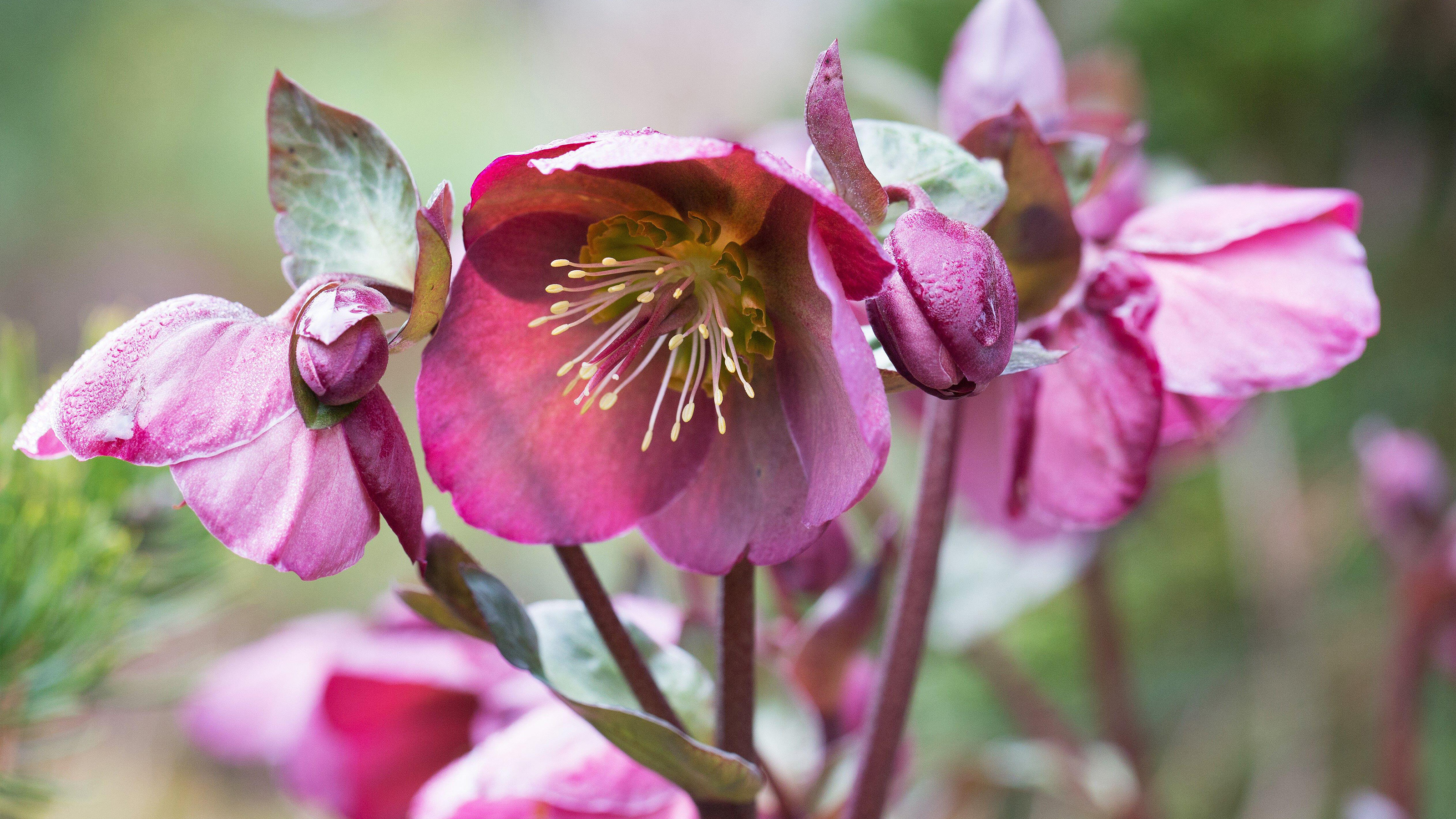

There are lots of different types of hellebores to choose from, but all are spectacular. From creamy-white blooms to deep purple and pink, they are a shining star in the winter garden, in both containers and in the ground.
These beauties are otherwise known as the Lenten or Christmas rose due to their flowering time. And once they are established, they are easy to look after – especially if you follow our top tips on how to grow hellebores. But with so much variety, it can be tricky to narrow down the best choices for your scheme.
To give you a hand deciding on the types of hellebores for you, we've rounded up our top favorites. Whether you're looking for something classic or a little more unusual, there is bound to be something you love in this mix.
Add winter interest to your garden with these 13 types of hellebores
Try these types of hellebores in your backyard this year for a stunning display. They're definitely one of the best winter garden plants.
1. 'Harvington Double Yellow'
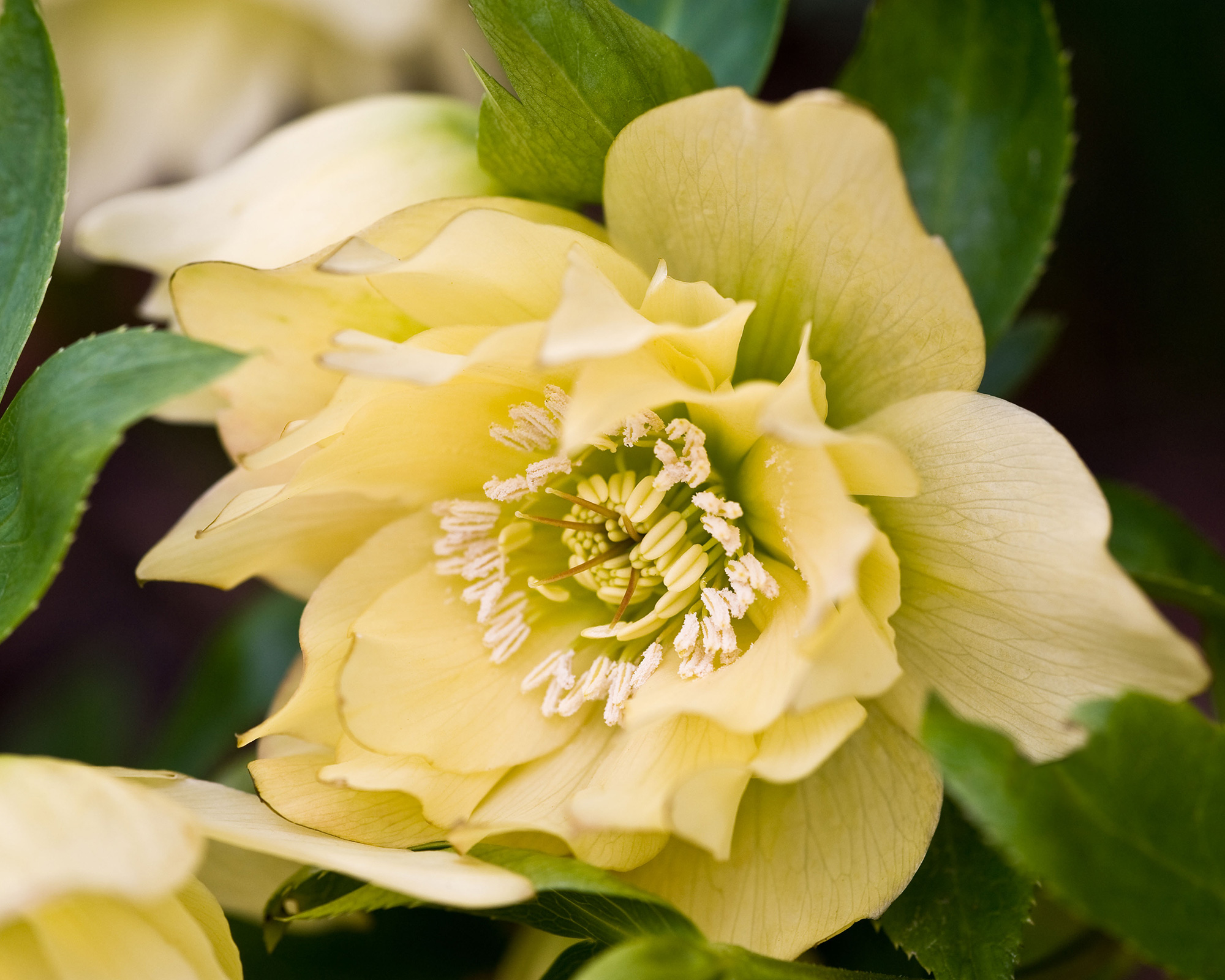
It's almost impossible not to love this lemon-yellow Helleborus x hybridus. The double, outward-facing blooms will bring joy to any onlooker, as well as to any early visiting pollinators.
It's perfect if you're on the lookout for bee-friendly plants for your borders. There's also a speckled variety if you prefer.
It flowers from February to April. Height: 24in (60cm).
2. 'Black Diamond'
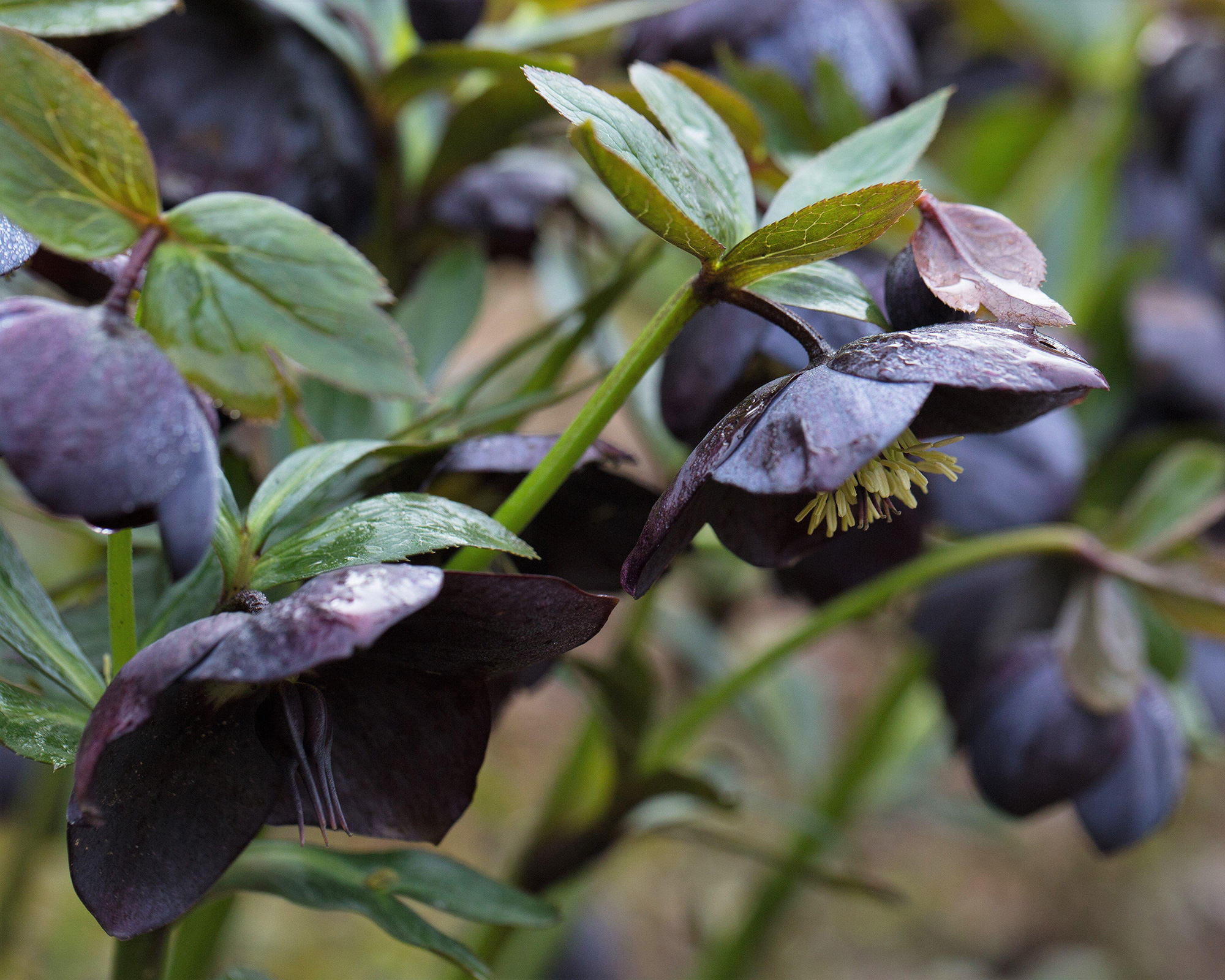
Part of the Winter Jewels™ series, the inky-hued, nodding blooms, bright yellow stamens, and evergreen leaves make this Helleborus x hybridus a real show-stopper. Pair it with frosty white flowers, such as snowdrops, for a striking contrast. A lovely choice for a large pot as part of your winter container gardening ideas.
It flowers from January to April. Height: 18in (45cm).
3. 'Penny's Pink'

Looking for stunning foliage for your winter displays? Try this hellebore variety, which has marbled, evergreen leaves that have a pink flush as they emerge. The markings are silvery and set off the mass of pink blooms above beautifully.
Expect to see this one flower from January to April. Height: 12in (30cm).
4. 'Single White Spotted'

'The Ashwood Garden hybrids have a good reputation for being strong plants,' says Tamsin Hope Thomson, gardening expert for Amateur Gardening. This Helleborus x hybridus variety has attractive single white flowers with red spotting, which will definitely hold your attention.
It will flower from January to April. Height: 12in (30cm).
5. 'Merlin'
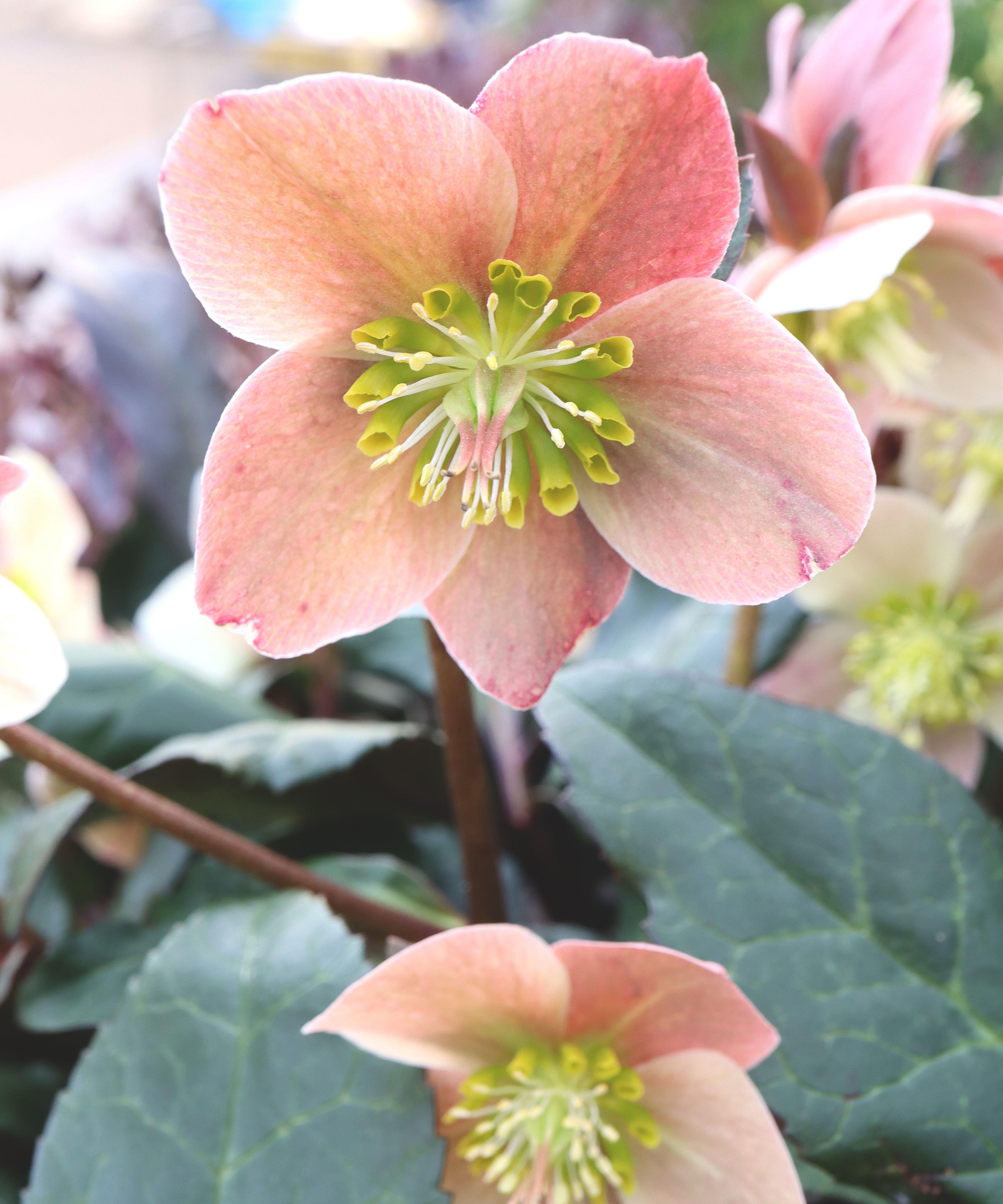
The leaves on this eye-catching Helleborus x ballardiae variety are an elegant gray-green. The outward-facing flowers start off pink and then, as time goes on, darken to a deeper pink to crimson. The yellow stamens make a jolly contrast.
They will brighten up your winter garden and beyond, as they bloom from January all the way to May. Height: 18in (45cm).
6. Corsican Hellebore

As Tamsin explains, these types of hellebores are popular for their evergreen foliage, which is prickly-edged like holly and looks good all year round.
These also make a lovely choice if you're a fan of green flowers. Pale and cup-shaped, they appear in clusters at the top of the plant, offering a refreshing splash of color to the garden from January to May. Height: 24in (60cm) and up.
7. Stinking Hellebore

'It may be called stinking hellebore, but don't let this put you off,' says Tamsin. True, some gardeners compare Helleborus foetidus to the scent of a wet dog, but this is only really noticeable if you crush the leaves.
'The unusual light green flowers with purple edges provide a good source of nectar, and this taller hellebore makes an architectural impact in the border,' says Tamsin.
It will flower from January to April. Height: generally 32in (80cm) – but can grow taller.
8. Helleborus x sternii
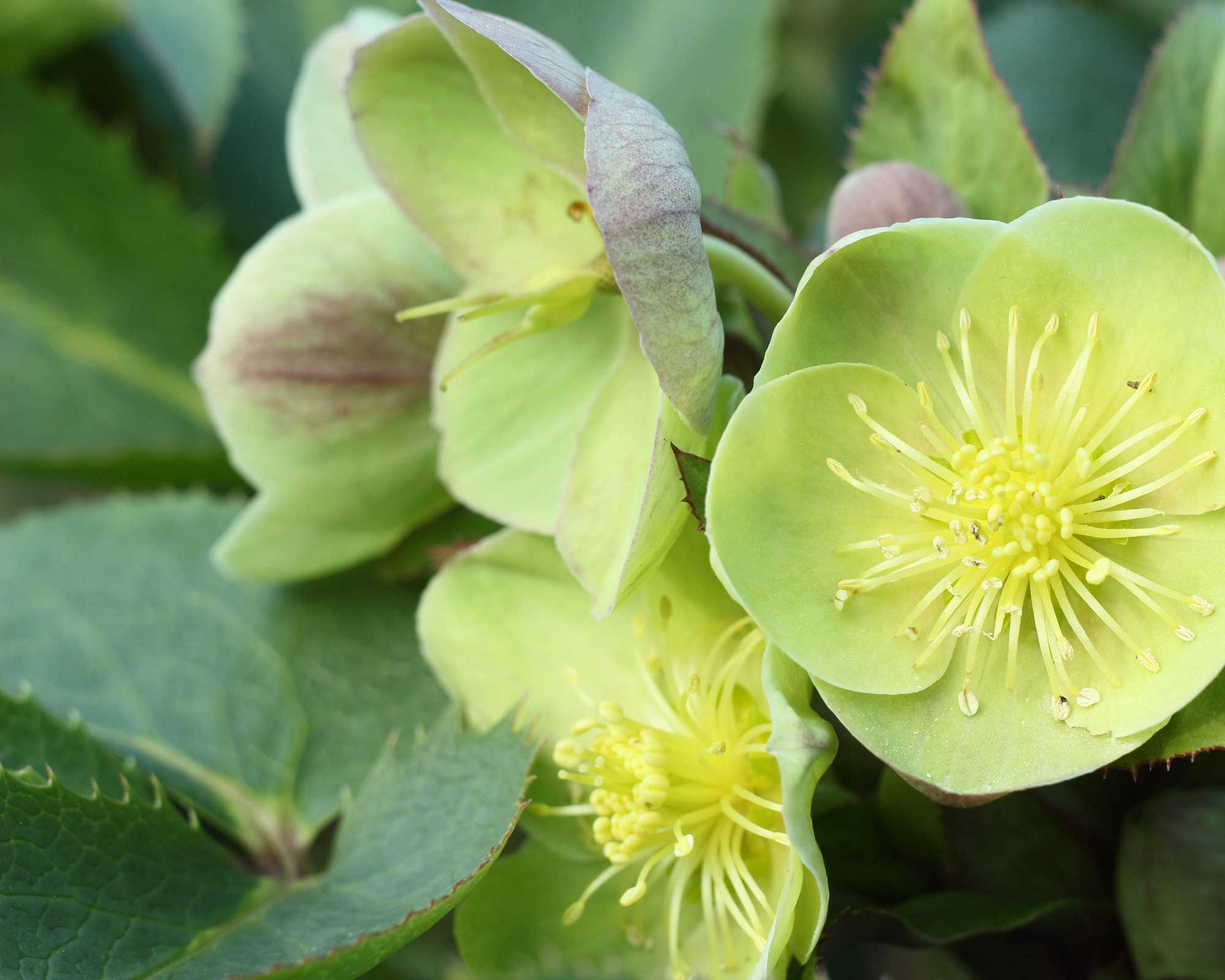
The creamy-green flowers of Helleborus x sternii have purple-tinted petals and will appear in February lasting through until May. Growing to a height of around 14in (35cm), it makes a lovely choice for positioning near the front of a border in a cottage garden.
Bear in mind that this perennial is semi-evergreen, which means it can lose some, or even all of its leaves in winter in colder regions. But don't worry, fresh new growth will appear in spring.
9. 'Harvington Red'
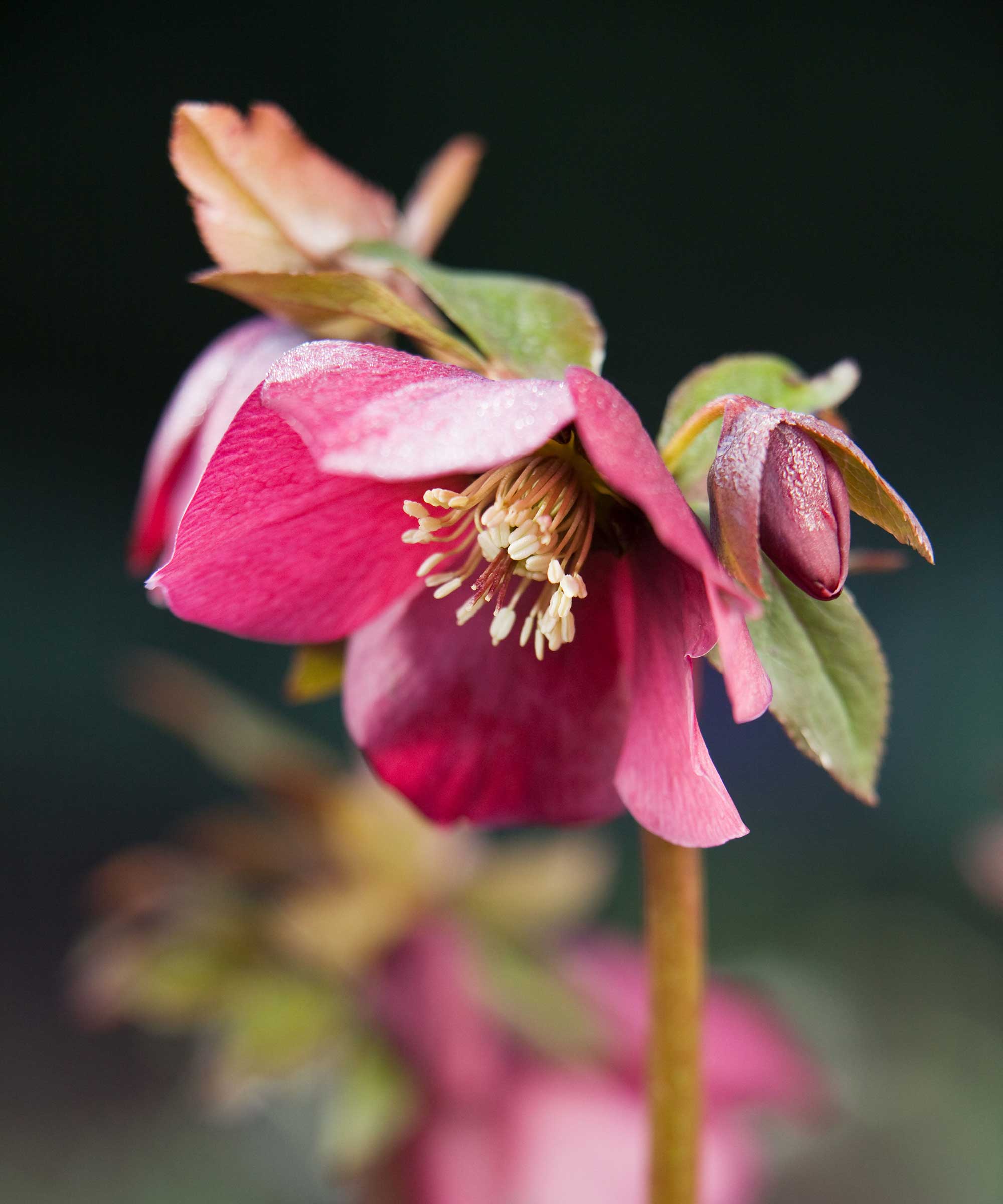
This deep pink Helleborus x hybridus variety is a surefire way to add drama to your winter flowerbeds. It will bloom from February to April, when other outdoor color may be scarce.
Plant them so they can be seen from a window as you'll want to enjoy them even when it's too cold to be outside. There is also a double-bloomed version – 'Harvington Double Red' – if you prefer the look. Height: 12in (30cm).
10. 'Harvington Black'
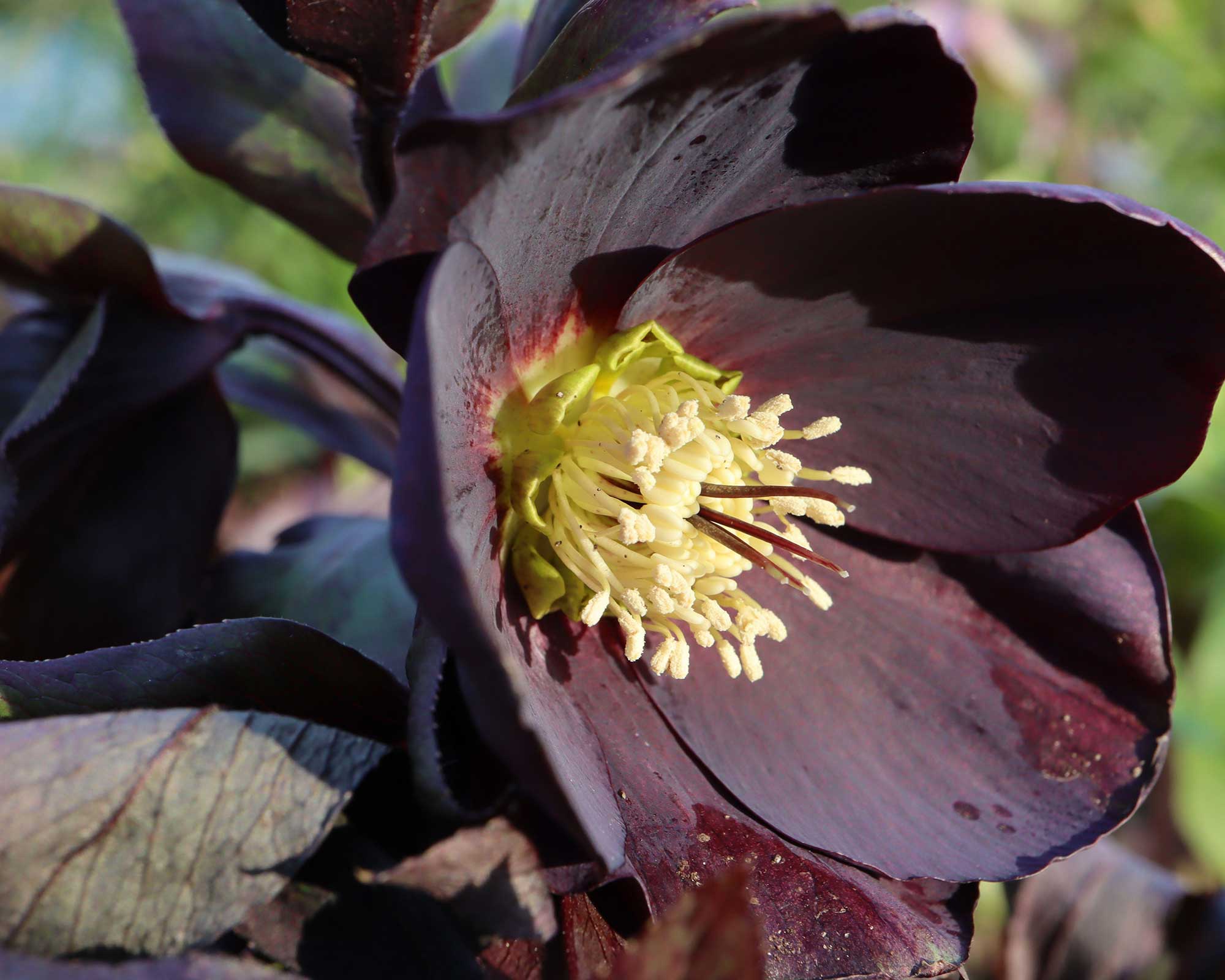
Add a touch of gothic glamour to your garden borders with this striking almost-black variety of Helleborus x hybridus. It won't fail to be a talking point for your friends and neighbors.
'Harvington Black' might need a little extra protection if temperatures really drop, so it's a good idea to apply a layer of mulch to the base of the plant. They'll grow to around 18in (45cm) and are a perfect pick for modern garden ideas.
11. 'Harvington Double White Speckled'
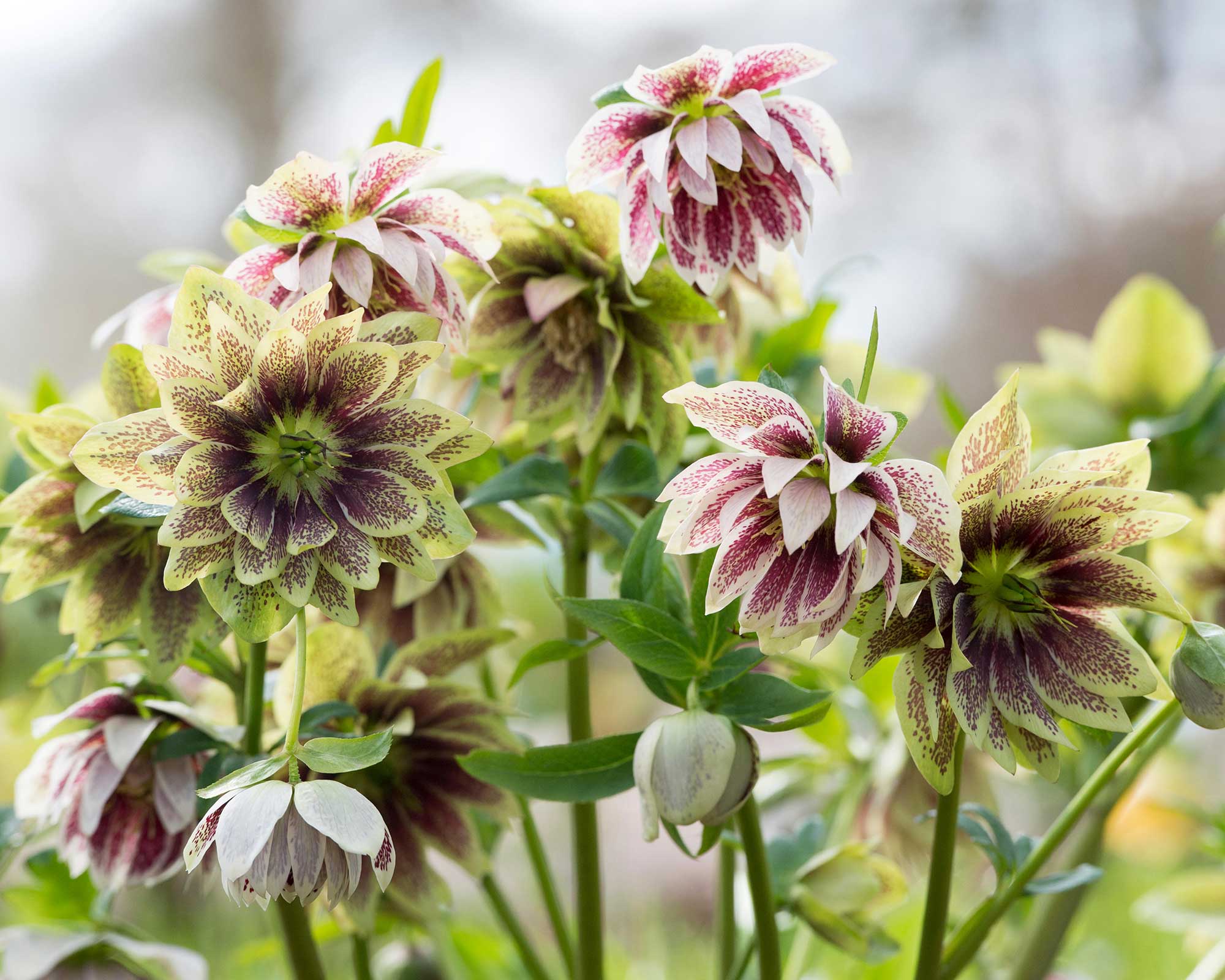
'Harvington Double White Speckled' is a Helleborus x hybridus variety with generous layers of white petals freckled with maroon. This elegant plant blooms from January to March and likes to be planted in neutral to alkaline soil types in semi-shade.
Height: 20in (50cm).
12. 'Walberton's Rosemary'
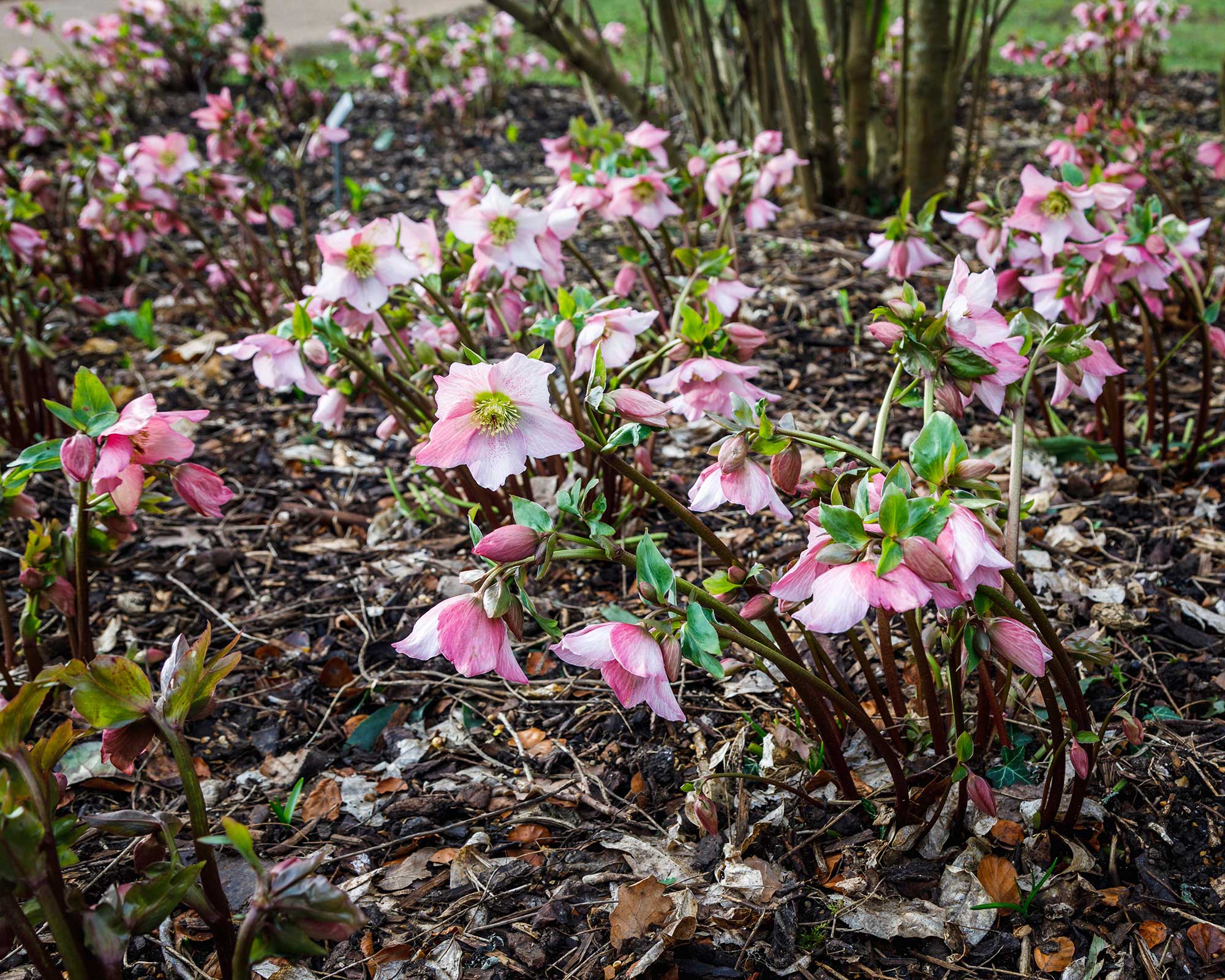
Also known as 'Walhero', this variety is a fantastic cross between Helleborus hybridus and Helleborus niger.
It is perfect for bringing a shot of pink to the winter border with its upright, star-shaped flowers from January to April. Plant it in rich, well-drained soil in sheltered semi-shade for the best results. Height: 16in (40cm).
13. 'Christmas Carol'
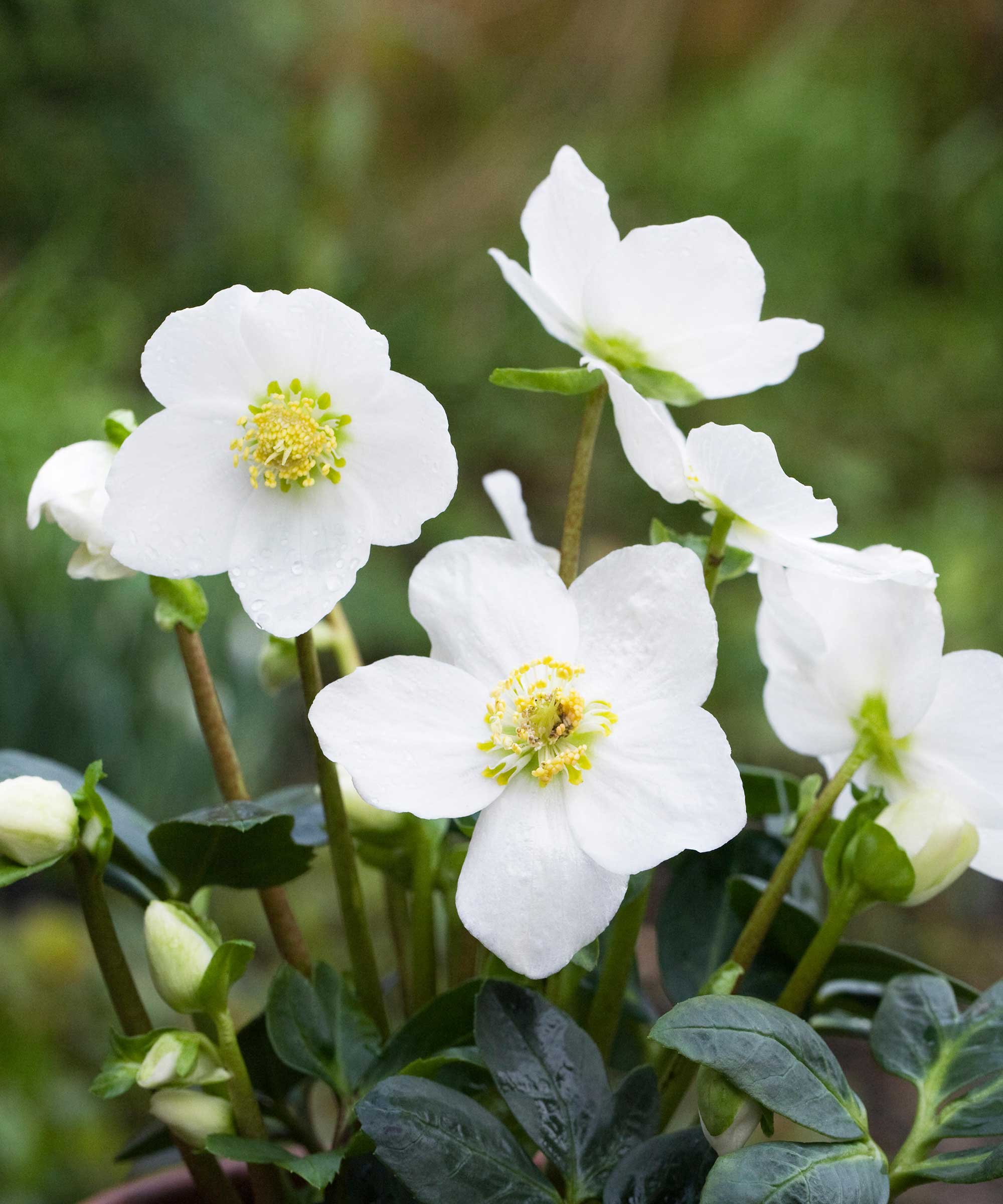
Helleborus niger 'Christmas Carol' is one of the best winter plants for pots. It has wonderful, snow-white, saucer-shaped blooms which often open in time for the festive season and will continue to bloom into spring.
Make sure you give it plenty of drainage and plant it in semi-shade against a wall for shelter for the best results. Height: 12in (30cm).
Which are the tallest types of hellebores?
Many hellebores are compact, reaching below 2ft (60cm) in height. These types of hellebores are perfect for winter garden planters, or for the front of a border.
However, there are taller varieties available, such as H.foetidus – the stinking hellebore – which can reach just over 39in (1m). 'This one, and H. argutifolius [Corsican hellebore] that is another tall species, make a great addition to the middle of the border where they'll add architectural value,' says Tamsin.
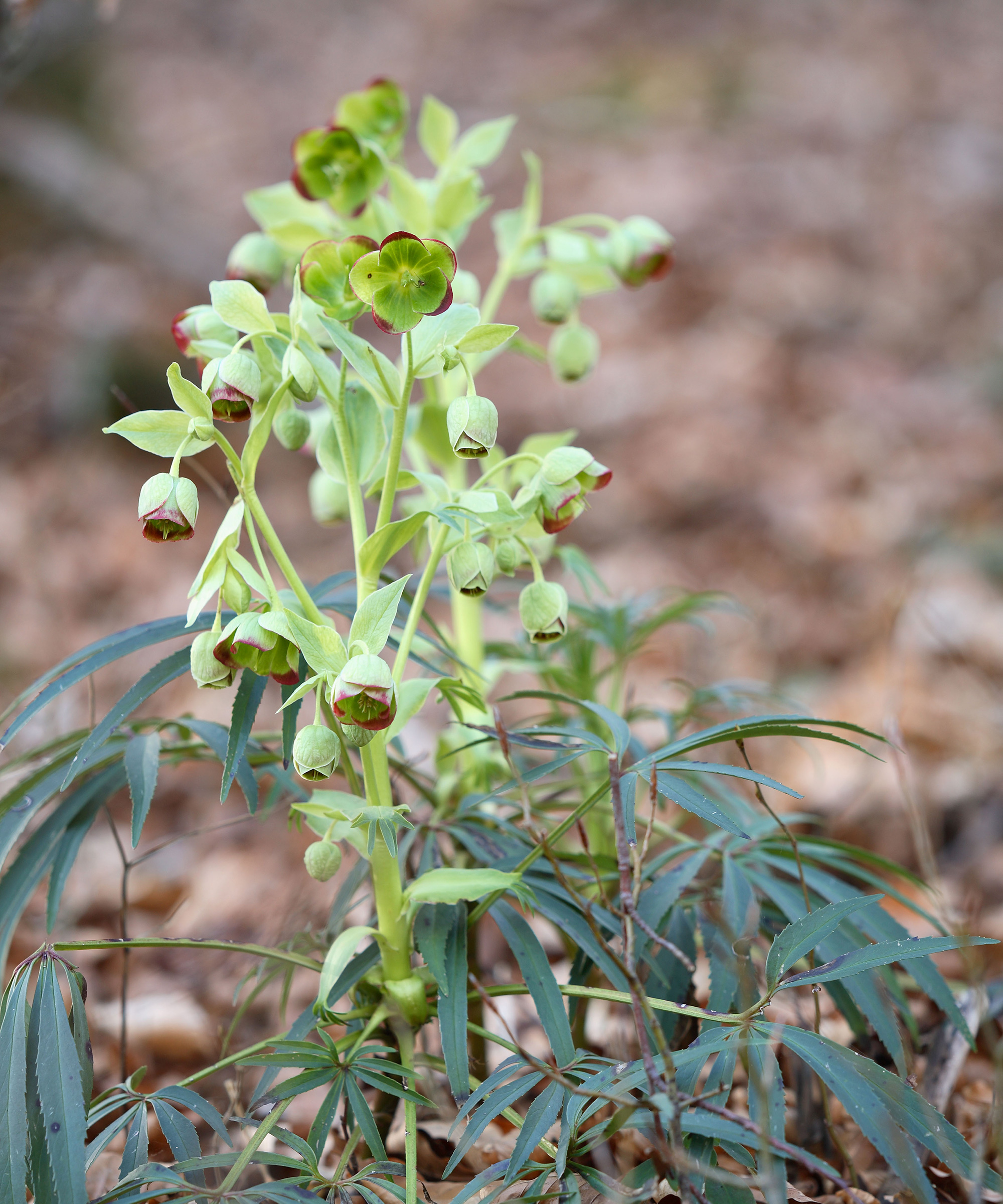
The stinking hellebore is a taller variety
Which are the best hellebores for containers?
Hellebores are fabulous additions to a winter container, adding beautiful color and form. However, according to the RHS, most should only be planted in this way as a temporary display. Once they've finished flowering, move them into the ground, planted at the same level as they were in their container. Remember to dig in plenty of organic matter first to help keep the soil moist.
There are some exceptions, such as Helleborus lividus, H. thibetanus, H. niger, H. x sternii and H. x ericsmithii, adds the RHS. They need protection from winter frost so it's best to keep them in their pots permanently, making it easier to move them into a sheltered spot or greenhouse when needed.

The garden was always a big part of Holly's life growing up, as was the surrounding New Forest where she lived. Her appreciation for the great outdoors has only grown since then. She's been an allotment keeper, a professional gardener, and a botanical illustrator – plants are her passion.
